20 Iconic Great American Pizzas to Taste Across the USA
Pizza has revolutionized casual dining across the United States, transforming from a simple immigrant dish to a nationwide culinary phenomenon.
Regional styles and innovative chefs have dramatically expanded traditional recipe boundaries, creating unique flavor combinations that tantalize taste buds.
Passionate pizza makers experiment with unexpected ingredients, pushing culinary creativity beyond conventional expectations.
American pizza represents more than just food - it symbolizes cultural fusion, creativity, and community connection.
Local ingredients, distinctive techniques, and bold flavor profiles distinguish these remarkable pies from their international counterparts.
Skilled pizzaiolos craft extraordinary combinations that reflect local traditions and personal culinary innovations.
Artisan techniques and regional influences contribute to a diverse pizza landscape that continues to surprise and delight.
These 20 great American pizzas will inspire your next delicious adventure:
Great American Pizzas That Go Beyond the Ordinary
American pizzerias are famous for their bold, inventive pies, loaded with creative toppings, unique crusts, and regional flair.
Every slice is a new adventure.
Apizza
Apizza represents a distinctive New Haven, Connecticut pizza style characterized by its prolonged coal oven baking and high-moisture dough.
Frank Pepe, an Italian baker, pioneered this unique pizza with minimal toppings like grated cheese, garlic, oregano, olive oil, and anchovies or tomatoes.
Handformed without uniform shape, these pizzas emerge from scorching ovens with a thin, black, crispy crust that looks burnt but tastes incredibly chewy.
Traditional versions include simple ingredient combinations that highlight the remarkable dough's complex flavor profile.
Coal-fired ovens reach extreme temperatures, creating a signature charred exterior that distinguishes apizza from other pizza styles.
Sparse toppings ensure the crust remains the star of this New England culinary tradition.
Italians immigrants brought this technique to Connecticut, transforming pizza-making techniques.
Authentic apizza demands careful preparation and passionate execution by skilled bakers dedicated to preserving its distinctive character.
Pepperoni Pizza
Pepperoni pizza dominates American cuisine as a spicy salami-topped sensation crafted with a blend of beef and pork.
Originating in the 1950s, this pizza variant quickly became a nationwide favorite across the United States.
Mozzarella cheese and tangy tomato sauce form the classic base, generously covered with zesty pepperoni slices.
Beef pepperoni remains the most popular version, though fish and pork alternatives exist.
Interestingly, the term "pepperoni" stems from the Italian word for large pepper, now signifying a specific spicy sausage.
Regional preparation styles add unique twists to this beloved dish.
Pizza restaurants and home kitchens alike celebrate this simple yet flavorful meal.
Crispy, spicy, and universally enjoyed, pepperoni pizza continues to satisfy American appetites.
Stromboli
Stromboli are rolled Italian-American sandwiches packed with savory meats and melted cheese inside a crispy bread exterior.
Created in suburban Philadelphia during the 1950s, these portable meals feature pizza-style ingredients like mozzarella, salami, pepperoni, and capocollo wrapped in either Italian bread or pizza dough.
Resembling a jellyroll, stromboli differ from calzones in their long, slender shape and preparation method.
Italian-inspired yet completely American, these sandwiches are typically rolled and baked until golden brown.
Marinara sauce accompanies the dish as a dipping condiment, enhancing its rich flavors.
Named after Roberto Rossellini's movie, stromboli quickly became a popular street food and casual dining option.
Regional variations now include additional vegetables and different meat combinations.
New York-Style Pizza
New York-style pizza represents a massive, thin-crusted pizza innovation pioneered by Italian immigrants in early 1900s New York City.
Lombardi's pizzeria first introduced these enormous, wide pizza pies that defined the city's signature style.
Massive slices become instantly recognizable by their crispy yet foldable crust, which many believe gains unique texture from New York's distinctive tap water minerals.
Generous mozzarella cheese covers the surface, topped with a heavily-seasoned tomato sauce featuring garlic, oregano, basil, and red pepper.
Traditional toppings include additional ingredients like vegetables or sausage spread across the cheese layer.
Slice sizes are notably large, making them perfect for quick street eating or casual dining.
Original recipes remain closely connected to Neapolitan pizza traditions while creating a distinctly American street food experience.
Sicilian Pizza
Sicilian pizza offers a hearty rectangular slice with a thick, focaccia-like crust characterized by its signature crispy bottom and generous sauce coverage.
Originating from the traditional sfincione in Sicily, this pizza transformed after Sicilian immigrants arrived in New York City and adapted the recipe using abundant mozzarella cheese.
Bakeries in NYC pioneered the mozzarella addition, creating a distinctly American interpretation of the classic street food.
Robust tomato sauce typically covers the melted cheese, ensuring a perfectly cooked crust with caramelized edges.
Bakeries across New York, New Jersey, Michigan, Connecticut, Rhode Island, and Massachusetts now serve this popular style.
Regional variations include different sauce-to-cheese ratios and toppings like pepperoni or vegetables.
Sicilian pizzerias often bake these thick slices in large rectangular pans for maximum crispiness.
Chicago Thin Crust Pizza
Chicago thin crust pizza dominates midwest street food with its signature cracker-crisp base, zesty herbed tomato sauce, and abundant mozzarella cheese.
Distinctive square-cut slices define this regional specialty, which locals prefer flat and crisp rather than folded.
Traditional toppings include crumbled Italian sausage, pepperoni, bacon, and prosciutto with occasional vegetable additions.
Midwest pizza enthusiasts argue you should "fold your laundry, not your pizza" when describing this distinctive style.
Restaurants across Illinois serve this iconic dish with regional pride and consistent preparation methods.
Crisp edges and robust sauce make this pizza a standout street food experience.
Square-cut pieces allow easy sharing and maximize crunch factor.
Midwestern diners consider this pizza a social dining staple that highlights simple, bold flavors.
Detroit-Style Pizza
Detroit-style pizza boasts a distinctive square shape with a thick, crispy deep-dish crust that sets it apart from traditional round pizzas.
Cheese gets pressed directly onto the dough, creating a caramelized edge that crackles with intense flavor.
Thick tomato sauce seasoned with garlic and spices covers the cheese, often topped with classic pepperoni scattered generously across the surface.
Originating at Buddy's Rendezvous in 1946, this Michigan-born pizza quickly gained national popularity for its unique preparation method.
Steel automobile industry trays originally inspired the pizza's signature square pan.
Crispy edges and layered ingredients make each bite a textural experience.
Beer or wine perfectly complements the rich, hearty slice.
Motor City pizza represents a delicious piece of American culinary innovation.
Greek-Style Pizza
Greek pizza emerged from Boston's Greek immigrant community in the late 1960s, featuring a distinctively thick, greasy dough with crisp, lacy edges baked in a heavily oiled pan.
Oregano-rich tomato sauce and generous cheese define its bold flavor profile, with traditional Greek toppings like feta, Kalamata olives, and artichokes enhancing its unique character.
Pepperoni frequently complements these ingredients, adding extra richness to the robust pizza style.
Bakers create the signature texture by frying the bottom crust in a well-greased pan, resulting in a crunchy exterior.
Maximum enjoyment requires immediate consumption, as reheating diminishes its distinctive qualities.
Immigrant creativity transformed standard pizza into a memorable Mediterranean-American fusion dish.
Boston restaurants popularized this innovative pizza variation, introducing a new culinary tradition.
Greek immigrants successfully adapted their culinary heritage to American taste preferences.
Chicago-Style Deep Dish Pizza
Chicago-style deep dish pizza revolutionizes traditional pizza with its signature thick, high-edged pan and layered ingredients that create a hearty meal resembling a savory pie.
Originating in 1943 from Pizzeria Uno, this distinctive pizza features an inverted assembly of ingredients with cheese directly on the crust, followed by meats and topped with chunky tomato sauce.
Italian immigrants inspired this unique style, transforming a simple flatbread into a substantial Chicago culinary landmark.
Ike Sewell and Ric Riccardo pioneered the concept, making the pizza a global sensation.
National Deep Dish Pizza Day celebrates this iconic dish on April 5 annually.
Restaurants across America now serve their interpretations of this thick, satisfying meal.
The crust remains crispy and golden, providing a perfect base for generous toppings.
Each slice offers a complete meal experience that goes far beyond traditional pizza expectations.
Grilled Pizza
Grilled pizza represents a revolutionary cooking method where pizza dough transforms over hot coals, creating a uniquely smoky and crispy result.
Italian-American restaurants like Al Forno in Providence, Rhode Island, pioneered this innovative technique that challenges traditional pizza preparation.
Chefs stretch pizza dough directly onto grill grates, cooking one side before flipping and adding toppings in reverse order.
You get a crispy base with charred edges and a distinct smoky essence that elevates the entire pizza experience.
Cheese melts perfectly when returned to the grill, creating a golden, bubbling surface.
Toppings can range from classic marinara and mozzarella to gourmet combinations like prosciutto and arugula.
Grill temperatures and timing determine the pizza's texture and flavor profile.
This method produces a lighter, airier crust compared to traditional oven-baked pizzas.
Grandma Pie
Grandma pie is a distinctive New York-style pizza characterized by its thin, dense crust baked directly in a well-oiled metal sheet pan.
Square-cut slices define its unique rectangular shape, delivering a crispy bottom that sets it apart from traditional round pizzas.
Italian immigrant families in Long Island originally created this style during the 1940s as a quick, home-style meal prepared with simple ingredients.
Home cooks would stretch the dough thin across rectangular pans without extensive proofing time, ensuring a compact and flavorful base.
Toppings typically include tomato sauce, mozzarella cheese, and occasional garnishes like fresh basil or garlic.
Minimal ingredient layering allows each component to shine through with robust flavors.
Commercial pizzerias now widely offer this beloved style, maintaining its authentic roots in family cooking traditions.
Restaurants across New York and beyond continue to celebrate this straightforward yet delicious pizza variation.
New England Bar Pizza
Bar pizza is a distinctive New England pizza style featuring a crispy, lacy-edged thin crust baked in a well-oiled pan.
Small and compact, this regional specialty differs from traditional pizza formats with its unique preparation method.
Dough ingredients typically include all-purpose flour, yeast, olive oil, sugar, and salt.
Chefs stretch the dough to cover the entire pan, creating a thin lip along the edges.
Tomato sauce spreads evenly across the base, complemented by a generous layer of mixed mozzarella and cheddar cheese.
Olive oil drizzled on top enhances the pizza's rich flavor profile.
The cooking process results in crispy, almost burnt edges that provide a satisfying crunch.
Each slice offers a perfect balance of crisp crust, melted cheese, and tangy sauce.
California-Style Pizza
California pizza represents a revolutionary culinary style blending New York and Italian thin-crust techniques with unconventional topping combinations.
Ed LaDou and Chez Panisse chefs pioneered this innovative pizza design in 1980, challenging traditional pizza norms.
Light and airy crusts serve as a canvas for unexpected ingredients like barbecue chicken, shrimp, peanut sauce, and goat cheese.
Thin and crispy bases support creative toppings that range from exotic proteins to unique sauces.
Pineapples, unusual cheeses, and adventurous flavor profiles distinguish these pizzas from classic Italian versions.
Wolfgang Puck helped popularize the concept through his restaurants, spreading California pizza's popularity nationwide.
Restaurants across America now embrace this flexible, experimental approach to pizza making.
Diners enjoy these pizzas as a fresh, modern take on a beloved international dish.
Stuffed Pizza
Stuffed pizza dominates Chicago's pizza scene as a hearty, cheese-laden variant emerging from deep-dish pizza traditions.
Massive amounts of cheese and ingredients nestle between two layers of dough, creating a substantial meal that differs from standard pizzas.
Chicago pizzerias pioneered this style with its thick, golden-brown crust and rich filling components.
Restaurants layer massive cheese portions underneath a thin top dough sheet with strategic ventilation slits.
Crumbled sausage, vegetables, and meats frequently fill the pizza's interior spaces.
Multiple cheese types contribute to its signature dense texture and flavor profile.
Bakeries and pizza shops across Illinois perfect this regional specialty through generations of recipe refinement.
Home cooks and professional kitchens alike celebrate this substantial pizza variation as a quintessential Midwestern comfort food.
St. Louis-Style Pizza
St. Louis-style pizza revolutionizes traditional pizza with its distinctive cracker-thin crisp crust cut into unique square pieces instead of traditional triangular slices.
Provel cheese, a signature blend of Provolone, Swiss, and white Cheddar, creates a signature tangy and creamy topping that melts differently from standard mozzarella.
Missouri natives developed this regional style through Imo's Pizza, which popularized the unconventional pizza in St. Louis during the 1960s.
Square-cut slices allow easier sharing and make the pizza perfect for group gatherings.
Toppings range from classic pepperoni to more adventurous combinations, maintaining the signature crisp base.
Restaurants across the Midwest now serve this distinctive pizza style, celebrating its unique characteristics.
Provel's processed texture and mild flavor distinguish this pizza from other regional varieties.
Thin crust ensures a crispy, lightweight eating experience that contrasts with traditional thick pizza styles.
Colorado-Style Pizza
Colorado mountain pie reveals a distinctive pizza style characterized by its thick, braided honey-infused crust that serves as a delicious barrier for abundant toppings.
Beau Jo's restaurant pioneered this unique pizza, allowing customers to customize their pie from over 50 ingredient combinations.
Gas-powered ovens bake these pizzas in roughly 10 minutes, creating a faster alternative to traditional deep-dish styles.
Honey accompanies the pizza, with diners often dunking the braided crust in the sweet syrup after their meal.
Unlike Chicago deep-dish pizzas that require 40-minute baking times, Colorado mountain pies cook quickly and efficiently.
Weight determines the pizza's pricing, reflecting its generous topping approach.
Originality marks this pizza's signature style, blending innovative crust design with flexible ingredient selections.
Regional culinary creativity shines through this distinctive Colorado pizza tradition.
Tomato Pie
Tomato pie embodies a unique New Jersey pizza-style twist with its inverted cheese and sauce arrangement.
Sicilian immigrants introduced this thin-crusted specialty during the 19th century in American communities.
Italian-American bakeries traditionally prepare the savory pie with a crispy base layered with tomato sauce and minimal cheese.
New Jersey pizzerias specialize in serving this regional delicacy at room temperature or slightly warm.
Rich tomato sauce dominates the pie's flavor profile, creating a distinctive taste different from standard pizzas.
Bakeries often use simple ingredients like crushed tomatoes, olive oil, and a light cheese sprinkle.
Some variations include herbs like oregano or basil for extra depth.
Restaurant menus across New Jersey feature this beloved regional dish as a cultural culinary staple.
Quad City-Style Pizza
Quad Cities pizza stands out as a distinctive Midwestern culinary creation featuring a rectangular shape and unique strip-cut slices that deviate from traditional round pizzas.
Originating in Iowa and Illinois, this regional specialty boasts a malt-infused crust with a rich, nutty flavor profile that sets it apart from other pizza styles.
Chefs prepare the pizza with a signature spicy sauce containing chili and cayenne pepper flakes, adding an unexpected kick to each bite.
Malt syrup plays a crucial role in developing the crust's distinctive taste and texture, creating a memorable eating experience.
Restaurants and pizzerias in the Quad Cities area pride themselves on maintaining this special pizza tradition.
Toppings typically follow standard pizza conventions, allowing the unique crust and sauce to remain the primary focus.
Locals and visitors alike enjoy this regional pizza style as a testament to Midwestern culinary creativity.
Restaurants throughout Iowa and Illinois continue to celebrate and preserve this distinctive pizza approach.
Pizza Strips
Rhode Island pizza strips are unique cold tomato sauce-covered bread squares served at local gatherings without cheese.
Bakeries, not pizzerias, prepare these thick-crusted squares with a focaccia-like base generously coated in bright red sauce.
Fresh herbs like rosemary or basil often enhance the simple sauce's flavor profile.
Rectangular trays produce large batches perfect for community events.
Kids especially enjoy these room-temperature bread pieces at birthday parties and summer cookouts.
Italian immigrant communities originally developed this regional specialty.
Sauce quality determines the strips' overall taste and appeal.
Baking techniques ensure a perfectly crisp yet soft bread foundation.
Old Forge Pizza
Old Forge pizza is a unique American pizza style born in Northeast Pennsylvania's former mining town, distinguished by its rectangular shape and lighter-than-traditional crust baked on metal pans.
Locals refer to a whole pizza as a "tray" and divide it into "cuts" instead of slices, featuring two signature varieties: red and white.
Red pizza boasts a slightly sweet tomato sauce, sometimes including diced onions, and combines a cheese blend of American, cheddar, and mozzarella.
White pizza emerges as a stuffed creation with cheese and optional fillings like broccoli or spinach, strictly forbidden from containing sauce and often topped with thin onion slices and fragrant herbs.
Crispy on the bottom and chewy in the center, this regional specialty represents a distinctive approach to pizza-making.
Each tray reflects the town's mining community heritage and culinary creativity.
Old Forge pizza stands as a testament to regional American food traditions, offering a unique twist on a beloved classic.
How Is American Pizza Different From Italian Styles?
American pizza and Italian pizza share the same roots but have evolved distinct characteristics shaped by culture, ingredients, and preferences:
American pizza reflects its diverse culinary influences and preferences for heartier, customizable options, while Italian pizza maintains a focus on tradition, simplicity, and artisanal quality.

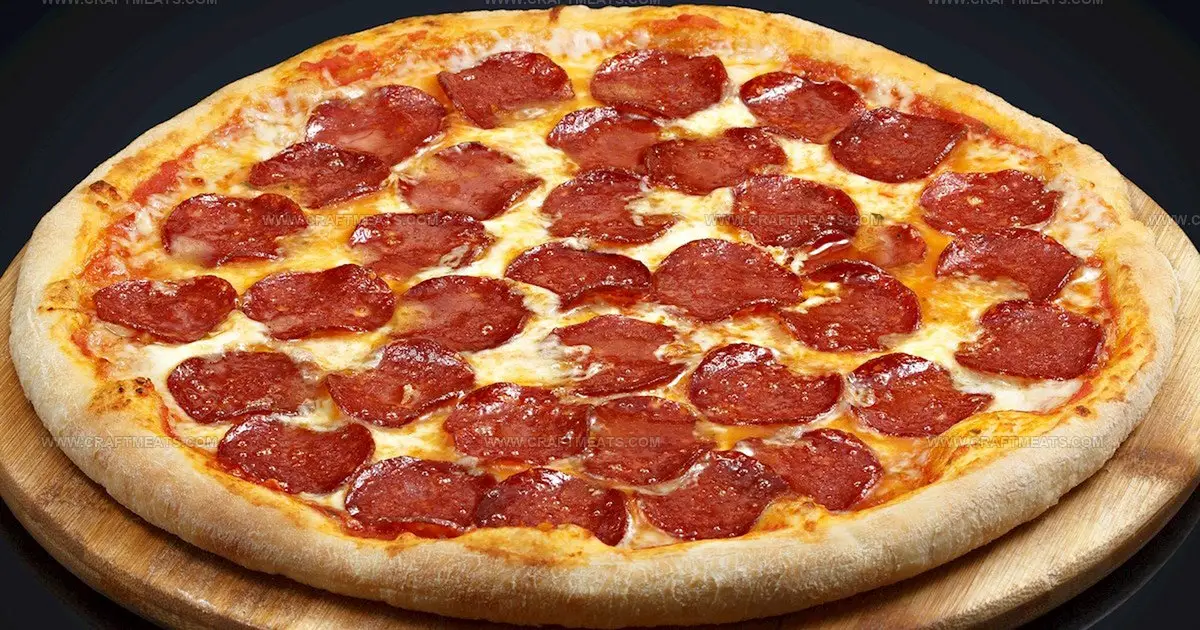
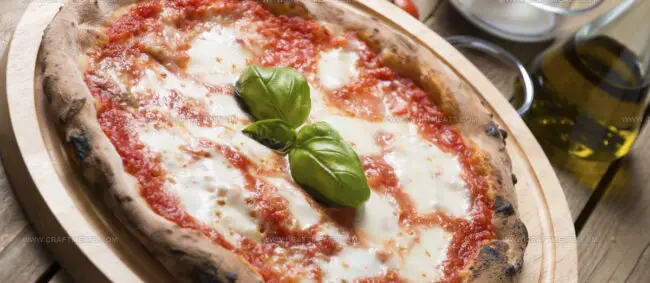





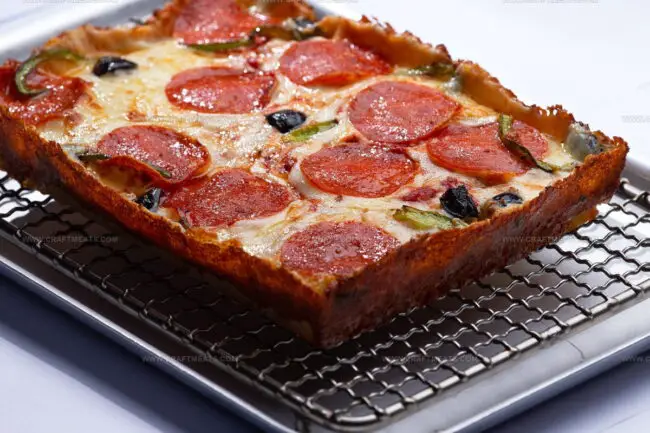
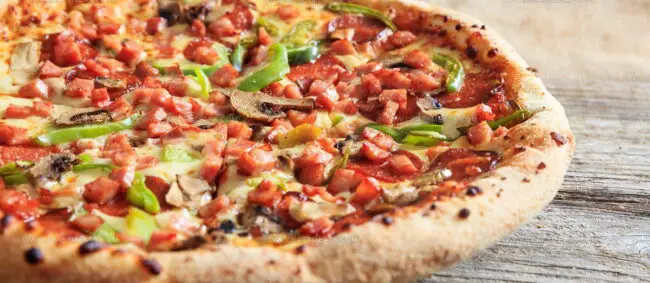


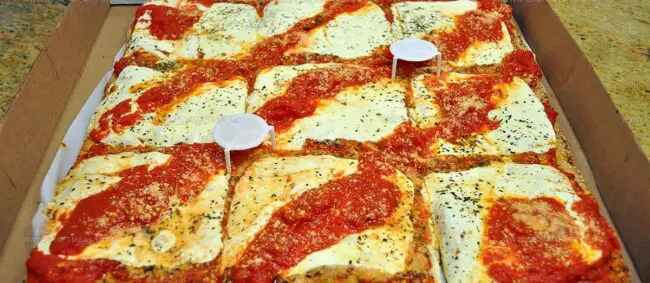


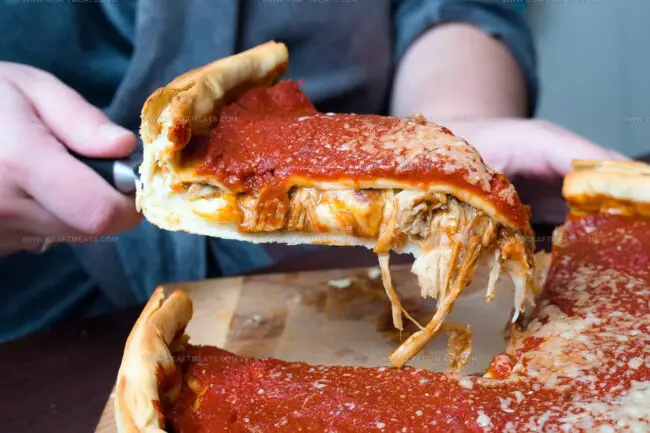

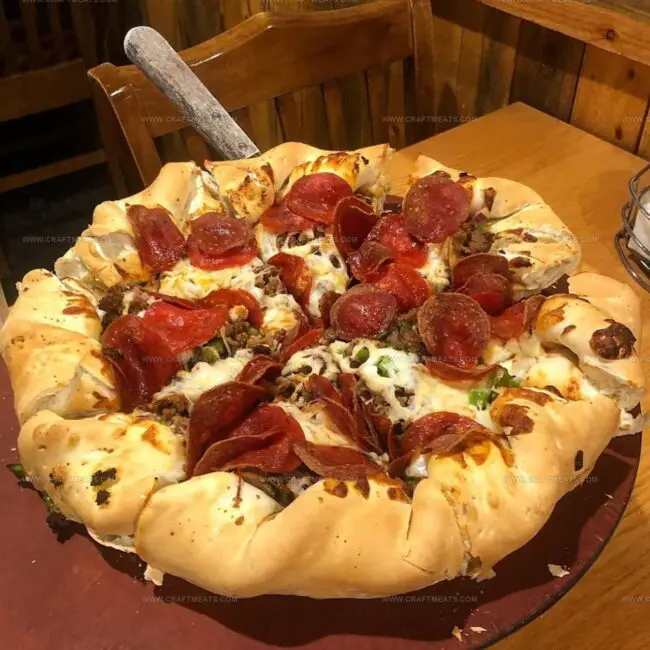
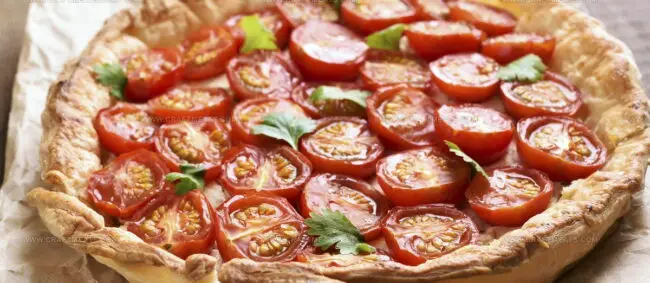
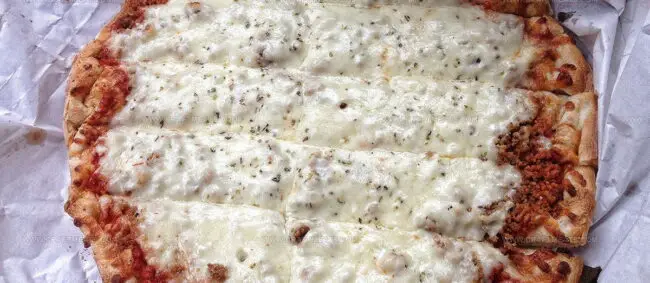
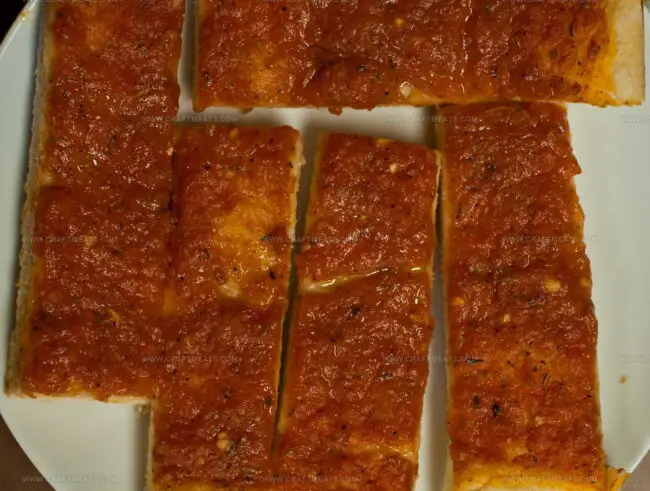


Isabella Rossi
Founder & Culinary Content Creator
Expertise
Recipe Development, Traditional Irish and European Cuisines, Food Styling and Photography, Culinary Education
Education
Dublin Institute of Technology (DIT) – School of Culinary Arts and Food Technology
Ballymaloe Cookery School
Liam is the voice behind many of Craft Meats’ most flavorful features. With roots in Dublin’s smoky barbecue scene and a culinary degree from the Dublin Institute of Technology, he brings time-tested cooking techniques to life.
His training at Ballymaloe Cookery School sharpened his farm-to-table approach, giving him a deep respect for every ingredient he writes about.
He’s not about overcomplicating the process, just helping you cook meat that’s worth talking about. When he’s not writing or grilling, he’s out foraging or nerding out on regional spice blends to add to his next recipe.